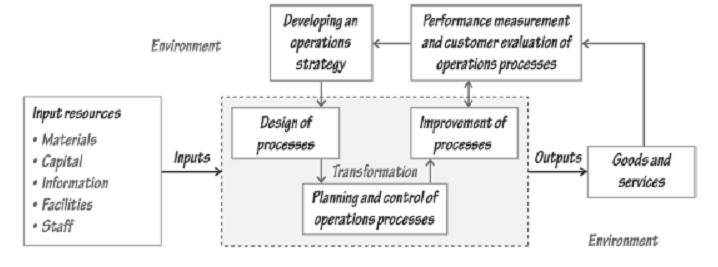Operations Function - Transformation Processes and Planning
The operations function is concerned with the design of transformation processes, planning their use, and organising and controlling their day-to-day activities, ie how inputs can be acted upon to produce the required outputs, in the right quantities, of the right quality, at the right time. The operations function can control 70% of all assets.
1. Operations can be viewed as a closed loop system. Systems display complex behaviour.
2. Operations systems may be classified according to the extent to which products or services are made-to-order, assembled-to-order or made-for-stock.
3. Operations systems may also be classified according to volume, variety or flexibility: project, job-shop, batch or continuous.
4. Service operations may be usefully classified according to Schmenner's Matrix, according to their degrees of labour intensity and customisation/ customer interaction.
5. As the service sector grows, it is increasingly apparent that service operations share many of the management problems encountered by production systems and can be described using the same theoretical constructs.
6. Responsibilities of an operations manager and the interface with other functions such as marketing, people management and accounting and finance.
7. The future challenges for operations managers especially in the service sector.
8. Review of major stages in the evolution of operations: past, present and future.
A general model of operations is illustrated in the following figure:
